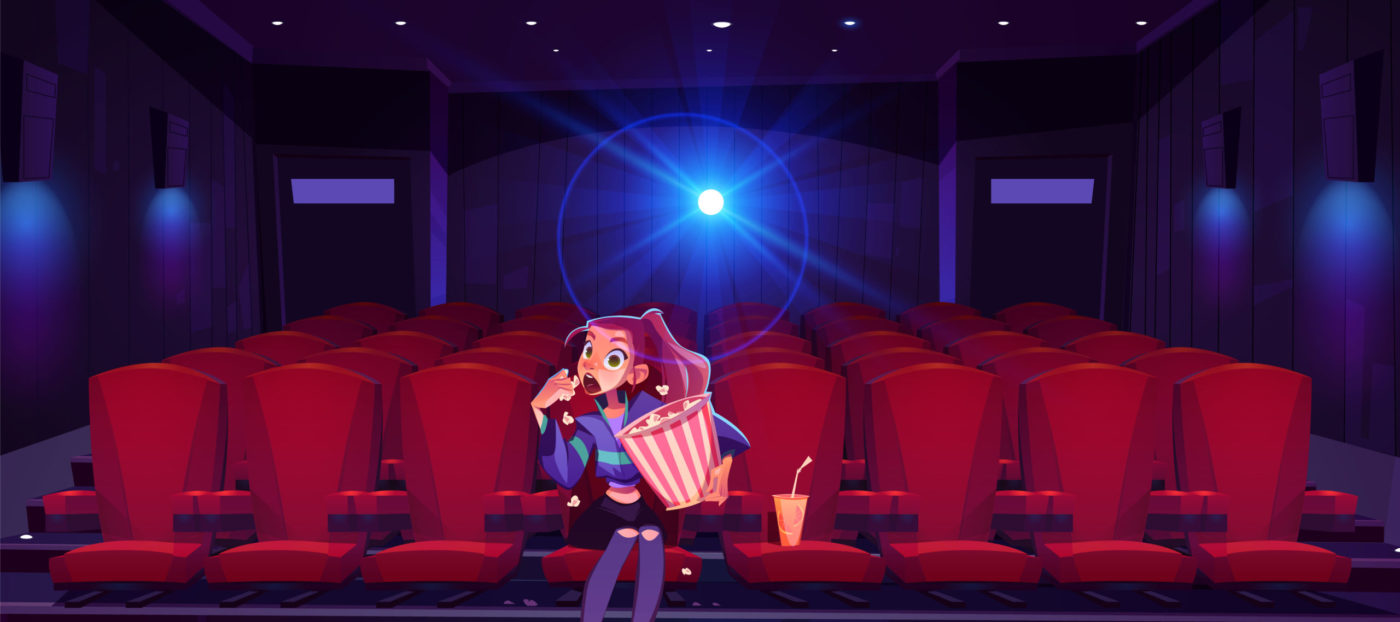
Gracenote: Best Picture Nominees Lean Into ‘Powerful’ Themes
Five of the last six best picture Oscar winners have captured an “emotional->touching” mood according to analysis of the films’ characteristics from Nielsen’s Gracenote. This run will likely be broken at the 95th Academy Awards on March 12 as only one of this year’s nominated films falls into this category and can therefore continue this streak. Academy voters have primarily selected movies with a “powerful” or “fun” feel to them for this year’s best picture nominations as nine of the 10 nominees are classified within one of these moods.
This recent domination of the best picture category by “emotional” films is unprecedented in the 94-year history of the Oscars. The closest domination by a specific mood was when “powerful” films won six of the 11 best picture Oscars from 2001 to 2011.
The 2023 best picture award will only continue this trend if it is given to The Fabelmans. Steven Spielberg’s movie also has a “powerful” mood according to Gracenote. This year’s 10 best picture nominations are dominated by “powerful” or “fun” movies. Nine of the nominees in 2023 have one of those Gracenote descriptors amongst their most important moods. Top Gun: Maverick, which is “tense” is the only exception.
“Emotional” films have not been completely ignored by the Academy this time around. Five of the six main acting nominations for movies not in competition for best picture have been for “emotional” works. “Introspective” and “sensual” are Gracenote’s only primary moods to have not been the most important in films awarded a best picture Oscar to date. However, last year’s best picture nominee Drive My Car, which won the Academy Award for best international feature film, had “introspective” amongst its most important moods according to Gracenote.
Films set in contemporary times are again popular with best picture voters. The last three best picture winners have had present-day settings and if this is repeated this year, it will be the longest sequence of winners set contemporarily since the late-1940s.
Gracenote Video Descriptors are hierarchical metadata tags following a structured global taxonomy applied across entertainment content. They provide insight into movies and TV shows by capturing various mood, theme, subject, setting, scenario, and character aspects of the content. Video Descriptors leverage Gracenote IDs, unique identifiers for content throughout the entertainment ecosystem.
 This rich data also enables Gracenote to analyze Oscar nominee and winner trends. The following analysis is mainly based on the Gracenote Video Descriptor for Mood which captures 293 different moods, grouped into a four-level hierarchy headed by 17 primary level moods. For example, the primary level mood “fun” contains another 22 different moods within it, six at the second level, 11 at the third level (all within the second level mood “humorous”), and another five at the fourth level of the hierarchy.
This rich data also enables Gracenote to analyze Oscar nominee and winner trends. The following analysis is mainly based on the Gracenote Video Descriptor for Mood which captures 293 different moods, grouped into a four-level hierarchy headed by 17 primary level moods. For example, the primary level mood “fun” contains another 22 different moods within it, six at the second level, 11 at the third level (all within the second level mood “humorous”), and another five at the fourth level of the hierarchy.
‘Emotional’ movies have dominated recent best picture winners
Movies described as “emotional” on the first level of Gracenote’s mood taxonomy have been successful at the Academy Awards in recent years. Five of the last six Oscars, and six of the last nine, for best picture went to films with this overriding mood. On the second level of Gracenote’s mood hierarchy, all of these movies were “touching.”
Considering the last six best picture winners, only 2020 winner Parasite, a “thoughtful” film, was not described as “emotional” by Gracenote. Marriage Story was the only “emotional” nominee that year.
This recent success of “emotional” films in the best picture category at the Oscars is unprecedented for any of Gracenote’s 17 primary level mood categories during the history of the awards. The closest domination by a specific mood was when “powerful” films won six of the 11 best picture Oscars from 2001 to 2011.
‘Powerful’ or ‘fun’ are this year’s key moods
The Fabelmans is one of six of this year’s best picture nominees with a “powerful” mood. This is either “powerful->compelling” (All Quiet on the Western Front, Tár, The Fabelmans and Women Talking), “powerful->ambitious” (Avatar – The Way of Water) or ‘powerful->bold” (Elvis) taking account of the second level of the Gracenote hierarchy too.
Eight of this century’s best picture winners have been classified as “powerful” movies according to Gracenote. This is one more than the number of 21st century winners which have been “emotional”. The 2019 winner Green Book had underlying moods which were both “emotional” and “powerful”, just as nominee The Fabelmans does this year.
“Fun” is the other popular mood for best picture nominees this year. Everything Everywhere All At Once, The Banshees of Inisherin and Triangle of Sadness all have a “fun – humorous” mood as the most important.
Historically, films with a “fun” mood haven’t been very successful in the best picture category. This century, only the 2015 winner Birdman and 2012’s The Artist have been categorized as “fun” by Gracenote.
The best period for “fun” films at the Oscars was 1969 to 1978 when Oliver!, The Sting, One Flew Over The Cuckoo’s Nest and Annie Hall all made off with the best picture award. There have only been four “fun” winners since – Terms of Endearment (1984), Shakespeare in Love (1999), The Artist (2012) and Birdman (2015).
Four of Gracenote’s 17 moods have dominated best picture since 2010
All 10 best picture Oscar nominees this year have at least one of “emotional”, “powerful”, “fun” and “tense” as an important mood. Since the number of movies nominated for best picture was increased in 2010, Gracenote has classified 62 percent of nominees and 92 percent of winners as having at least one of these four moods.
Across the ceremony’s full history, films with 15 of Gracenote’s 17 top level moods have won the Academy Award for best picture with only “introspective” and “sensual” missing out.
Last year’s best picture nominee Drive My Car, which won the Academy Award for best international feature film, had “introspective” amongst its most important moods according to Gracenote, as did 2015 nominee Boyhood. “Sensual”, which is grouped with “romantic” in the graphics below, is the only one of Gracenote’s 17 highest level moods to have not featured amongst best picture nominees at the last 14 Oscar ceremonies.
The only 2023 nominee not mentioned so far, Top Gun: Maverick, is a “tense->thrilling” movie according to Gracenote’s video descriptors. The only “tense->thrilling” movie to have ever been given this award was the very first best picture Oscar winner, Wings in 1929.
The last “tense” film to win the best picture Oscar was Argo in 2013, a “tense->harrowing” movie. Tense films seem to have become less popular in recent years as Top Gun: Maverick is only the fifth “tense” nominee in the last seven years, following Black Panther (2019), Joker (2020), Judas and the Black Messiah (2021) and Promising Young Woman (2021). All four of those films also had a second mood at the highest weighting. From 2010 to 2016 there were 13 “tense” films nominated for best picture.
Elvis would be the first “powerful->bold” film to win best picture if it is successful on March 12.
This year’s best picture favorite, Everything Everywhere All At Once has also been allocated “outrageous” in addition to “fun” in its most important primary moods. It is only the fourth “outrageous” film to be nominated for best picture since 2010, after BlacKkKlansman (2019), Once Upon a Time in Hollywood (2020) and Mad Max: Fury Road (2016). The only “outrageous” winner of the best picture Oscar is Tom Jones in 1964 which was also “fun” and “heartwarming.”
Contemporary time settings in vogue for best picture success
The winner of the Oscar for best picture tended to be given to a film with a contemporary time setting until the mid-1950s. This was especially the case from 1939 to 1956 when 13 of the 18 best picture Oscars were awarded to movies which were set at the same time in which they were filmed.
This trend changed once historical epics became popular with the Academy’s voters in the second half of the 1950s. Around the World in 80 Days, The Bridge on the River Kwai, Ben-Hur and Lawrence of Arabia all won in a span of seven years from the 1957 ceremony onwards. Musicals, also generally in a historical setting, were at their height at around the same time with Gigi, West Side Story (which was contemporary), My Fair Lady, The Sound of Music and Oliver! all winning the best picture Oscar between 1959 and 1969.
Historical settings have remained popular amongst the films winning the best picture Oscar ever since with mainly stories from the 20th and 21st centuries being successful. Gladiator (2001) and 12 Years A Slave (2014) are the only two best picture winners since 1999’s Shakespeare in Love which were set before the 1920s. Best picture Oscar winning films set in the future or with an ambiguous time setting due to being fantasy are also conspicuous by their absence. In the 94-year history of the Oscars, only 2004 winner The Lord of the Rings: The Return of the King could be described this way. Not a good sign for Avatar: The Way of the Water this year.
Recent best picture Oscar winners have returned to contemporary times after eight successive victories for films set in the past between 2012 and 2019. This year’s hot favorite is another contemporary movie, Everything, Everywhere, All At Once. Amidst all of the madness of that film’s multiple parallel world settings, the primary timeline is the present day. If Everything, Everywhere, All At Once (or Tár, Top Gun: Maverick or Triangle of Sadness) wins, it will be four successive years of present-day films winning this award, the longest sequence since the late-1940s.
